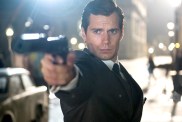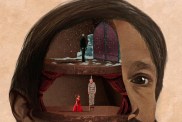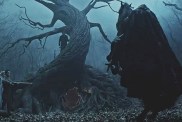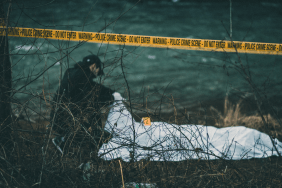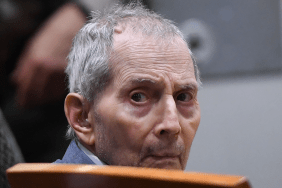ComingSoon.net: From your previous two films, you’re not the first director we might think of as someone to do biblical epic, to be honest. Did they come to you to do this or did you go after this movie?
Catherine Hardwicke: Well, I heard that the Pope really liked “Thirteen.” I think he’s been TIVOing it and watching it on a regular basis. (laughter) No, I think it was random and accidental that my agent sent me a stack of scripts in January of this year that needed a director. They often do this, “Are you interested in any of these things? If you are, we’ll ask if they’re interested in you.” I think they were probably just as surprised that I was interested. Like I said, I read it and started getting excited about the idea of going deeper than they had ever gone into these characters. Usually, you just think of them with their halos, not as humans. So I thought, “This is fascinating and I want to explore that world.” And I went in with a big pitchideas and photographs and talked about how I really wanted Mary to be someone from the region, not to look Swedish, not a blonde blue-eyed Mary, but somebody who looked like they could live in that Mediterranean region with that beautiful olive skin tones. I wanted her to be 13 or 14 years old, and I guess they decided to
Maybe noone else would take the job. But they went with me and they said, “Yes, we’ll go with your take, your idea of Mary” and of course, I walked out of there going, “Well, who on earth am I going to cast now?” There’s no A-list actors or nobody from the Middle East who’s a 14-year-old girl. I was like “Why did I say anything?” Suddenly, one day, Keisha just popped into my head a couple days later, because I loved her in “Whale Rider”; she was so moving, really soulful.
CS: There have been so many other nativity stories over the years, so why was it so important to revive it now as such a high-profile movie?
Hardwicke: Not really, there’s been one TV movie in the ’80s or something. Very few people have tackled the subject. People think that most people know the story, and I don’t know how many of us grew up Christian, but you don’t really think about them as real people with problems we would all have. You don’t think about them on the first level as being Jewish. We barely know anything about the story, and we don’t think very deeply about it usually, even though it’s a beautiful, magical story that has endured forever. I was captivated by the story itself, just the beautiful relationship between these characters and how their love grew and each one had to have more strength and more courage to stand up for each other. I love that part of it, but now, going to Jerusalem, right off the bat, that’s a part of the world that’s in so much strife, and the first passage opens with the prophecy in the bible that Israel will dwell securely. We haven’t ever achieved that yet, and that’s an important sacred place for so many religions, yet how come we can’t get along and love the beauty of other religions and appreciate other people? I think it’s an important time now for people to think about religion.
CS: You’ve worked a lot with teenagers
Hardwicke: Exactly, or that have a teenage mentality.
CS: So how did that experience play a part in this?
Hardwicke: Well, that’s what was kind of cool. The most famous teenager in the world. We don’t usually think of Mary that way, but when you do the research, you do realize that she was 13 or 14 years old. Life expectancy was so short at the time and people died in childbirth. I felt that’s what really drove me to the film, to think all the teenagers that I know, what if they were faced with this kind of thing and these kinds of challenges, which was kind of an incredible idea, so it just made me interested to get inside of her, what she would have thought and how she would feel.

Hardwicke: The biggest challenge was that all that stuff had to be done in nine months, and I had to edit it and [do] the score. Every single element had to be completed nine months and ten days after I got the script, and that was on two continents. So it was just about being ultra-efficient, you know, the laptop and the “crackberry,” just working on everything you could work on at every moment. I would literally be riding in a four-wheel drive through the desert in Morocco, taking digital photos, and the computer would be plugged into the car battery-lighter thingy, and you’re trying to organize everything. Maybe we could shoot that scene there, and this one here, and try to add layers, talk to experts, scholars, do crash courses. We had a lot of scholars come down. An ancient astronomy professor came in and told us about what kind of instruments they used. How sophisticated was Persian astronomy at that time? Then we made instruments that seemed to be right. You guys heard about the Nazareth boot camp. That was like a full-on total immersion system in milking goats and weaving cloth and making the bread, because women would wake up every single morning and grind the grain and make bread. You didn’t have a refrigerator or preservatives and all that stuff.
CS: Was the Nazareth boot camp your idea?
Hardwicke: Yeah, because I wondered about how we would get people to go back in time. I did the boot camp in both of my previous movies, in a way. In “Thirteen,” it was more like slumber parties. Nikki and Evan would stay over at my house, and Holly and everybody had slumber parties and we really tried to bond and live in that house. For “Dogtown,” we had two months of surf and skate camp. The boys did not wash their hair because the ocean washes your hair if you’re a surfer. We really tried to live the life in a way, and that’s the only way that you can just go into a total immersion, the best you can do to make it real, and that’s what we tried to do in all the movies.
CS: Since “Thirteen”, we think of you as having an indie mentality, so what kept you from shooting this on handheld DV cameras like that movie?
Hardwicke: In each movie, I try to do what was right for the character and the story. When I did “Thirteen,” I wrote it with Nikki, a 13-year-old girl, and like the whole time I was working with her and writing with her, if a song would come on the radio, even if we were having a really heavy conversation, she’d be distracted or go on to this or that, or her phone would ring. So I think our life today is very fractured and very frenetic, and I was trying to capture that with the camera movement. And then when I did the skateboard movie, “Dogtown,” it’s that, but now you add wheels to the kids, so I had to actually be on a motorcycle cam with them half the time just to chase them around. Now in this case, we go back in time, we’ve got the pace of a donkey, and life was at a little different pace so I thought it needed to be more like the pace of life at that time too.
CS: Did you watch any previous biblical epics, like “The Ten Commandments” for inspiration?
Hardwicke: No, I don’t go for those kind of movies. It’s a different style, and I can’t relate to them to be honest. They’re very stiff and formal. I’ve tried to sit through them, but no.
CS: Although most of the stories about the birth of Jesus focus on Mary, your movie deals just as much with Joseph. Can you elaborate on that decision?
Hardwicke: I think that since it is this relationship, you realize that she didn’t make that trip to Bethlehem alone, and if you want to look at it this way, God’s plan was for her to have a partner to help her get through this. If you want to look at it in a secular way, it’s a beautiful relationship story, it’s just the strength of the marriage and the love that these two people have for each other, or developed, in her case–she didn’t have it at first. He showed by his actions much more than his words, what kind of a man he was, what kind of heart he had. And that won her over.
CS: How did you approach the scenes with the angel Gabriel?
Hardwicke: That was a real struggle, you know? How much do you show and not show? How would an angel appear to somebody? That was a tricky thing. It’s interesting to think of if you really go to the source material, the Bible. Every time an angel appears to somebody, he says, “Fear not.” There has to be something a little exciting and electrifying when this person appears, so I tried to get a little bit of that feeling with the natural environment where you see the wind and you felt this presence of an energy when he comes near you. In the temple, it’s the smoke or the olive branches. Try to think of the most beautiful, spiritual place and I found that olive grove and I thought, this might be the place that you could feel connected to that spirituality of another world. Then have it be a man that looks like the people, because at first people are scared, but then they do start listening and talking and interacting, so he probably did look like the people that he came to talk to.

Hardwicke: The incredible thing to me was that I grew up knowing the nativity story, but I didn’t even know the first, most basic thing about it: Mary and Joseph were Jewish. Wow! That’s like 101, and I didn’t even think about that. They don’t advertise that in your Church Sunday School classes, and I realized that’s what I was probably the least educated about. So we got a Jewish scholar to come down from Rome and we made a small synagogue there in the Nazareth village, and he taught us about how people prayed in the first century. The thing that was really cool, I thought, was that you would pray with your eyes open, try to have a closer connection to God, you were encouraged to have your own gestures, not in a ritual way, but you would really try to bring God into your heart. You could move your hands, kiss it, touch it. So the thing that was fascinating was that you needed to be grounded or it doesn’t make sense, and Mary wanted to have that closeness with God, but maybe got a little closer than she was expecting, a little more personal. I still think it’s very important to know, what were their feelings and what were the rules at the time and all that?
CS: What kind of impact do you think this movie will have on people, whether they be children or grown-ups?
Hardwicke: Well, I hope that people could think more deeply about faith, even about their own faith, and what courage it takes sometimes to be different from others. You have to have that faith to believe and get you through. I hope that there is a message of tolerance because as we worked on the movie, we had people from all religions. We filmed in a Muslim country, and we had every kind of person working on the movie, including people that had no religious affiliation but had a spirituality or connection to this material in a way, and to the idea that there is something deeper and more important; there’s some heart and soul. Also, the virtues of these people and the fact that they had courage to do things, like Joseph had courage. I hope people can feel it on many different levels. The cool thing about the Vatican screening, it’s a benefit for a town in Israel that was bombed, to build a school, and in that town there are Muslims, Christians, and Jewish people all living together. So it’s a message of peace I think, which we need at this time.
CS: Is this movie going to be screened in Israel as well?
Hardwicke: I think so. I think it’s going all around the world. Oh yes, because our friends in Israel from the Nazareth village just sent me an e-mail saying they’re looking forward to it.
CS: What are you doing next?
Hardwicke: I’m trying to do “The Monkey Wrench Gang,” which is about people passionately caring about the environment. I’ve got to say, working on this movie, trying to find a location that looked the same as two thousand years ago, we have messed this land up pretty bad. So I think it’s time, now more than ever, to care more about the planet and what we’ve got left.
CS: Is that movie going to be all fiction?
Hardwicke: It’s based on a novel that Edward Abbey wrote in 1975, and Robert Redford, Sean Penn, Dennis, Hopper, a lot of people, have tried to make this movie over the years. It’s a cult classic, an environmental movement classic, and it’s very Butch Cassidy. William Goldman did a draft, and now we’re trying to make it a little less expensive so we can afford it.
The Nativity Story opens on Friday, December 1.
